Did you notice that the recommended cooking temperature for pork has changed over the last few years? Learn about the proper pork cooking temperature and get my favorite tips for cooking pork safely every time!
I have partnered with the National Pork Board to bring you this information. Graphics were provided by pork.org. As always, thoughts and opinions are my own.
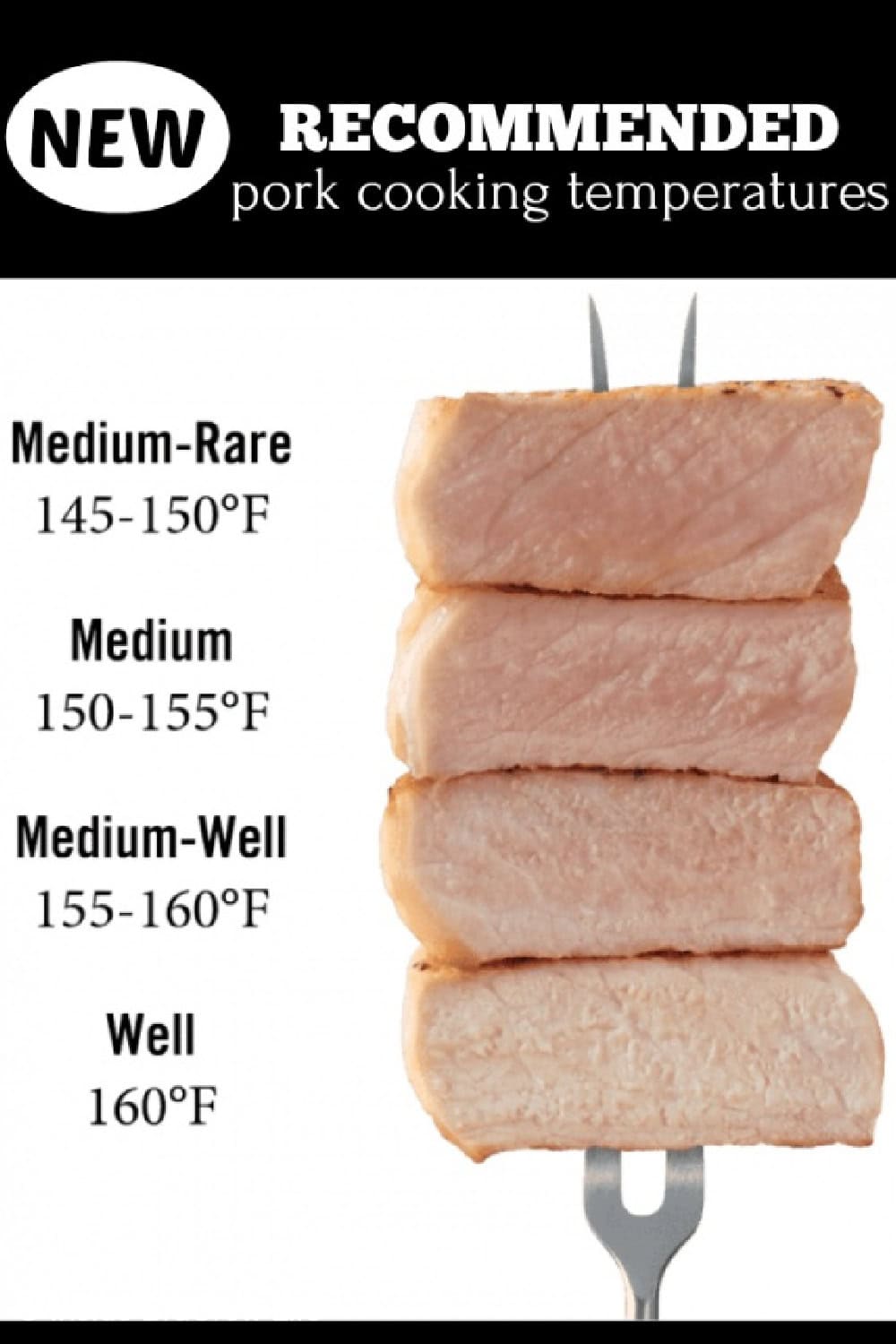
Jump to:
For decades, people were told pork temperatures needed to be well done to be safe. Generations of people have grown up eating overdone and dried-out pork dinners. Fortunately, things have changed recently, and I'm excited to share with you what the safe pork temperature is now and how to enjoy those cuts of pork for dinner.
Recommended Pork Cooking Temperatures
Until a few years ago, the recommended cooked pork temperature for ALL cuts of pork was 160°. Now, thanks to biosecurity and vastly improved animal health, whole cuts of pork are safe to eat at a lower temperature.
So say goodbye to dried-out, overcooked pork dinners! It's official. You can (and should) cook your pure cuts of pork to 145°, NOT until the juices run clear! Remember, the cooking temperature for ground pork is still 160°!
Recommended Internal Temperature for Different Cuts of Pork
According to the National Pork Board and the USDA's Food Safety and Inspection Service, these are the new recommended temperatures for different fresh cuts of pork and other options.
- Pork Chops, Pork Roasts, and Tenderloin - 145°F with a three-minute rest period
- Ground Pork - 160°F
- Marinated Pork, Sausages, and other Prepared Cuts - 160°F
- Pre-cooked Ham - reheat to 140°F or eat cold
- Fresh Ham (not cooked) - 145°F and let the meat rest for 3 minutes
If you need a rule of thumb here, remember that raw meat (except ground meat) needs to reach a minimum temperature of 145°F with a three-minute rest period. This is the new safe internal temperature.
Cook ground meats and other prepackaged or marinated cuts of pork to 160°F. This is essential to kill off harmful bacteria and ensure the meat is safe for your family.
This provides the optimal eating experience. Pork cooked this way has a different taste, texture, and flavor. I highly recommend purchasing a meat thermometer and following a pork temperature guide to cook your pork to medium-rare or medium.
Adhering to the pork cooking temperature guidelines will result in the best eating experience for flavor and safety.
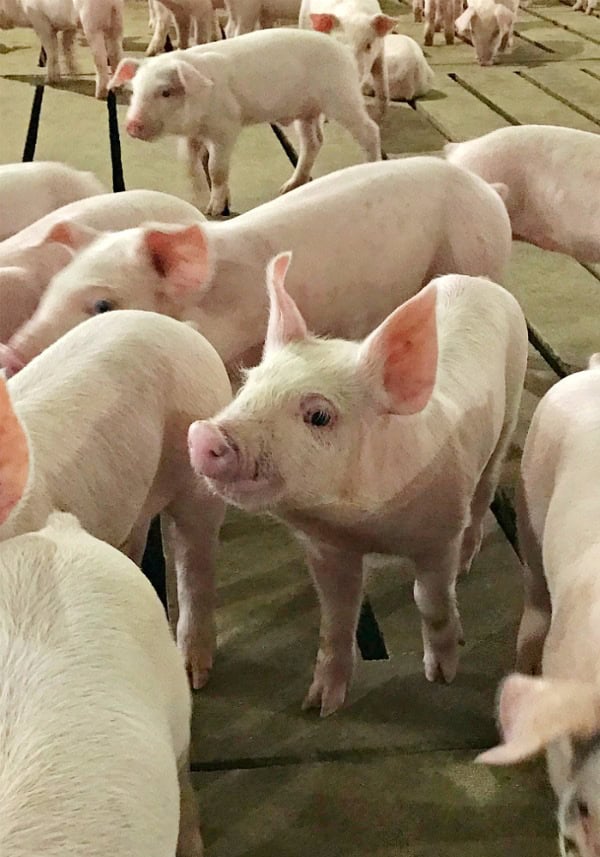
Why Did The Recommended Temperature For Pork Change?
The USDA guidelines for cooking pork changed for several reasons, but the main reason is major changes in the pigs' living conditions.
The main reason for the higher temperature in the past was to remove trichinosis. Pigs raised outdoors could get a parasite called Trichinella from the dirt, and it could be passed onto humans if it wasn't killed in the cooking process.
These days, farming looks a lot different than before. Thanks to biosecurity and with pigs being raised indoors, this is NOT a risk anymore.
Commercial pig farms are all indoors, and the pigs are also grain-fed; therefore, they are not exposed to Trichinella. They live in a much more comfortable and safe environment.
Tips for Buying the Best Pork Every Time
- One important indicator of good pork quality is the color. Redder is always better. A deep-colored cut of pork means it has a high water-holding capacity. Look for red and firm pork cuts because they will be juicy and flavorful.
- Make sure the pillow pack is NOT full of liquids. If the liquid has already seeped out of the meat, leaving it grayish-white. This means it has already lost much of its moisture and will produce drier pork once cooked.
- Look at the marbling in the pork cuts. A meat's marbling indicates its fat content. The amount of marbling is mostly a personal consumer preference. Keep in mind that fat = flavor. If you are concerned with fat content, you would want to opt for less marbling, while those looking for more taste will want to choose more marbling.
- Be sure to pick the right cut of pork for your recipe. See the guide below on How to Cook Pork and Choose the Right Cut.
Fun Fact: It is illegal in the US to inject pigs with hormones. Any commercial farmer found doing this would lose their ability to sell pork in the US. So, any labels that you may find on packages in stores claiming to be "hormone-free" are just a ploy to get you to pay more money.
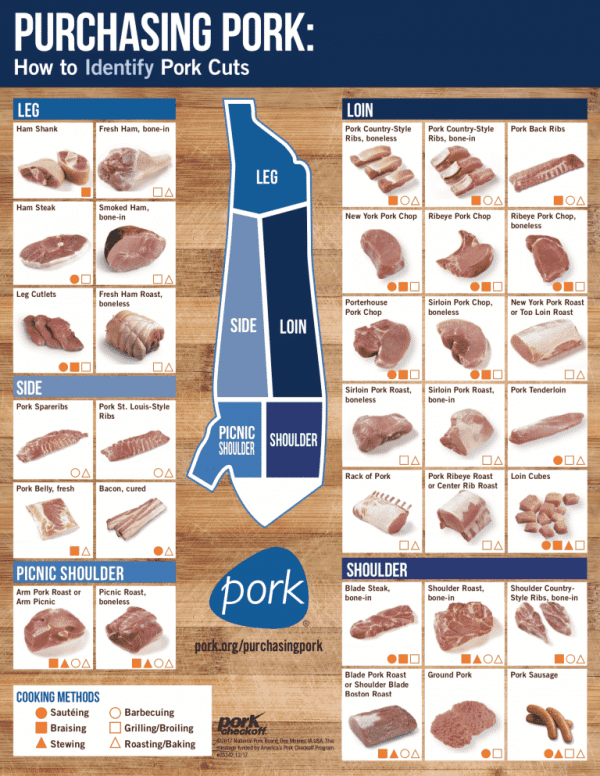
What Is The Best Temperature To Cook Pork?
The best temperature to cook pork depends on the specific cut of pork and the cooking method you are using. If you cook ground pork or searing pork chops, you'll likely want to cook over medium heat. Other cuts, like ribs or pork shoulder, will probably be smoked low and slow for a long time until they are tender. Knowing the correct temperature to cook your pork is essential, and don't stop cooking until you get there!
Regardless of the cut of pork you have chosen, the finished cooking temperature should be at least 145°F. This yields a pork product that is much pinker than what most people are used to. Please do not go by color, though, as it is not an indicator of doneness or temperature.
FYI: Always remember to cook ground pork and enhanced pork cuts to 160°F.
"The National Pork Board now recommends cooking fresh cut muscle meats such as pork chops, pork roasts, pork loin roast, pork butt, and tenderloin to an internal temperature of 145°F, followed by a three-minute rest."
Pork today is very lean due to changes in farming, so you mustn't overcook it. Following the correct pork cooking temperature will ensure that your cooked cut of pork will be juicy and delicious.
Use a meat thermometer to check the done pork temperature to ensure the best eating experience. For an accurate reading, be sure the thermometer is not touching bone or fat.
How to Cook Pork
- One important indicator of good pork quality is the color. Redder is always better. A deep-colored cut of pork means it has a high water-holding capacity. Look for red and firm pork cuts because they will be juicy and flavorful.
- Make sure the pillow pack is NOT full of liquids. If the pork has turned grayish-white, it has lost moisture and will be dry after cooking.
- Look at the marbling in the pork cuts. A meat's marbling indicates its fat content. The amount of marbling is mostly a personal consumer preference. Keep in mind that fat = flavor. If you are concerned with fat content, you would want to opt for less marbling, while those looking for more flavor will want to choose more marbling.
- Be sure to pick the right pork cut for your recipe. See the guide below on How to Cook Pork and Choose the Right Cut for Recipes.
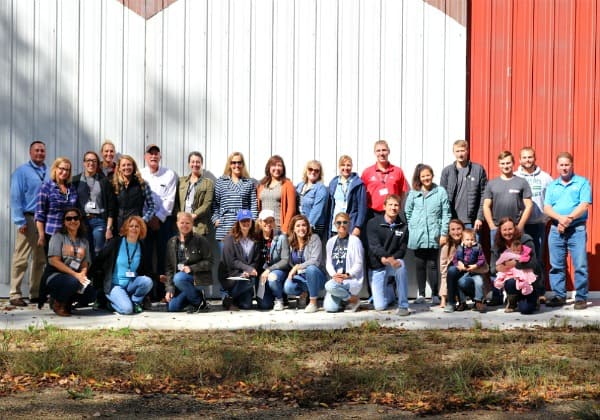
Farm Safety
Have you ever wondered what happens behind closed doors at a pig farm? Last year, I had the opportunity to visit a few farms in Sioux Falls and learn about the reasons for safety and caution on farms.
Biosecurity
I also visited a few pig farms in Michigan with the National Pork Board a few months ago. We didn't go into the barns with the infant pigs this time, so we just had to put on blue bunny suits and plastic shoe covers as a safety precaution.
The biosecurity and safety measures that are used when someone visits a farm are for the pigs' safety. I honestly didn't know much about pig farming or biosecurity before I visited these farms. Biosecurity is just a fancy word for keeping pigs healthy.
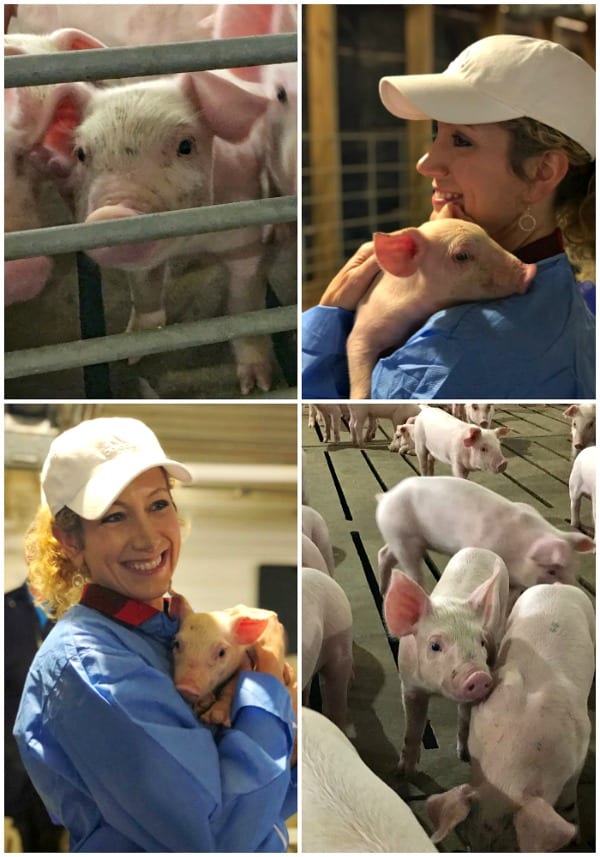
Cleanliness
Pig farmers keep their barns and stalls clean to help minimize disease and illness in their pigs. They also need to be very careful about outside visitors bringing other illnesses that could affect their barns and livelihood.
Most farmers do not like to use antibiotics, but they realize that keeping the pigs healthy while growing is very important. Animals on antibiotics are tracked and closely documented.
Any meat tested by the USDA and found to have any traces of antibiotics is thrown away, and the farm is flagged. If this happens again, that farm cannot continue to process its cuts of pork there.
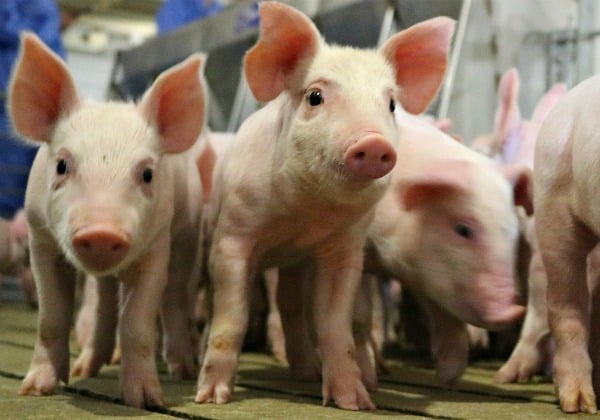
Education
As I visited the pig farms in Michigan, I was excited to see how friendly and open everyone was. These farmers are always learning and applying research to improve the lives and health of their pigs.
Every farmer is doing their best to be good stewards of the land and resources they own. They also want to be good neighbors and caretakers as they provide people with high-quality pork.
Many of these farmers are adding air filtration systems in their barns, requiring visitors to show in and out, and installing climate control systems. Anything that comes into contact with the pigs is thoroughly cleaned and disinfected.
Even the trucks used to transport pigs to market and to and from farms are completely washed and then heated or "baked" to 160° for 10 minutes. This process kills any bacteria or disease that may be present.
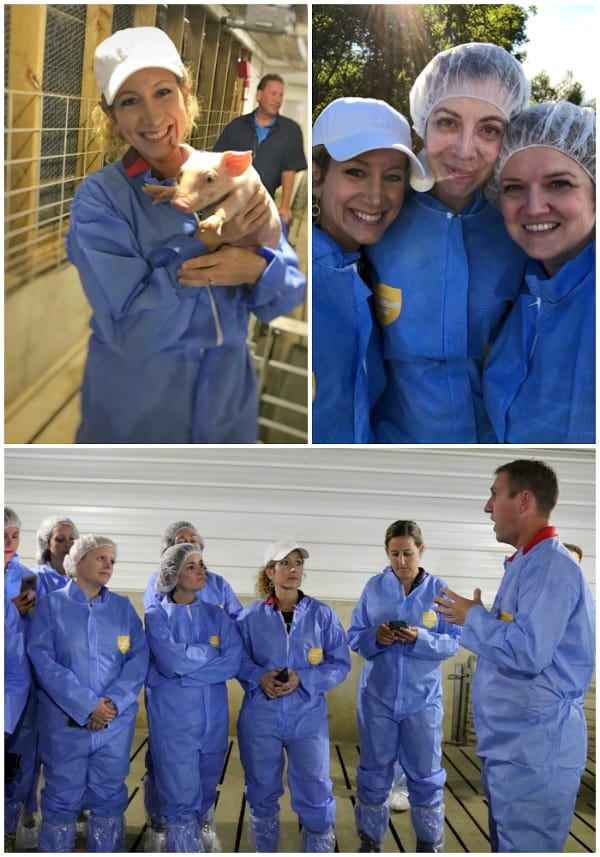
Easy Pork Recipes
- McCormick Pulled Pork recipe
- Cream Cheese Stuffed Pork Tenderloin
- BBQ Pork Pizza
- Sausage Pasta Skillet
- Green Chili Pork Tacos
- Stuffed Zucchini with Hamburger (Bacon Cheeseburger)
- Tortilla Wrap
- Bacon Jalapeno Deviled Eggs
- Healthy Pulled Pork
- Apple Bacon Casserole
The National Pork Board sponsored this post. As always, all thoughts and opinions are 100% my own.
We participate in the Amazon Services LLC Program, an affiliate program designed to earn fees by linking to Amazon.com.


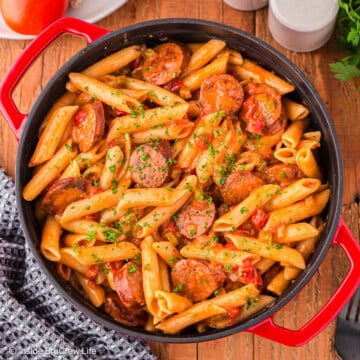
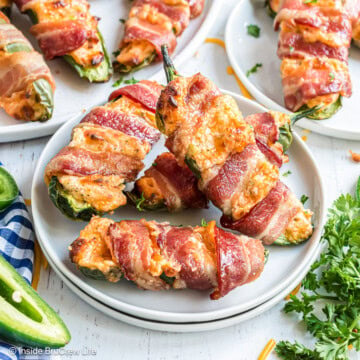
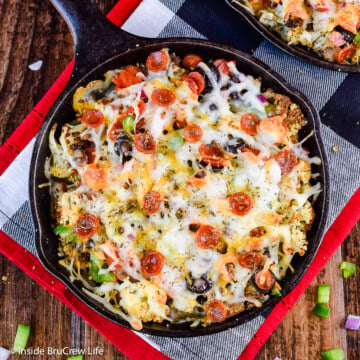

Theresa G says
Thank you for the information. Consider me a convert! My husband has been telling me this for a while now, but I've always been old school, resistant to change. Always eating the smaller pieces of the tenderloin because they were cooked more, etc. I always learn so much from you!